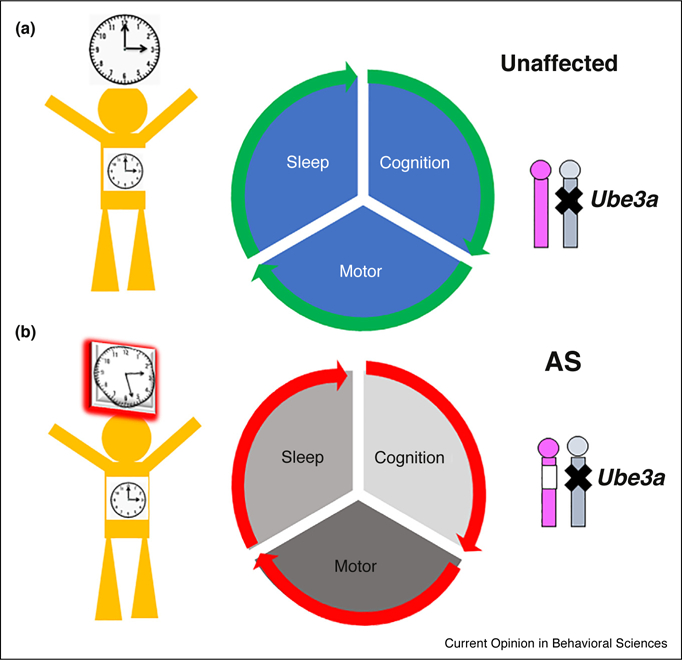Figure 1.

Angelman Syndrome (AS) results from deletion (open box on chromosome 15 in lower right corner of the figure) of the Ube3a gene on maternal chromosome 15 and concomitant imprinting (X) of the Ube3a gene on paternal chromosome 15. In addition to motor and cognition deficits (middle panels), AS has significant effects on sleep and the circadian clock (note desynchrony of brain vs. peripheral clocks in left panels) [19●●].
